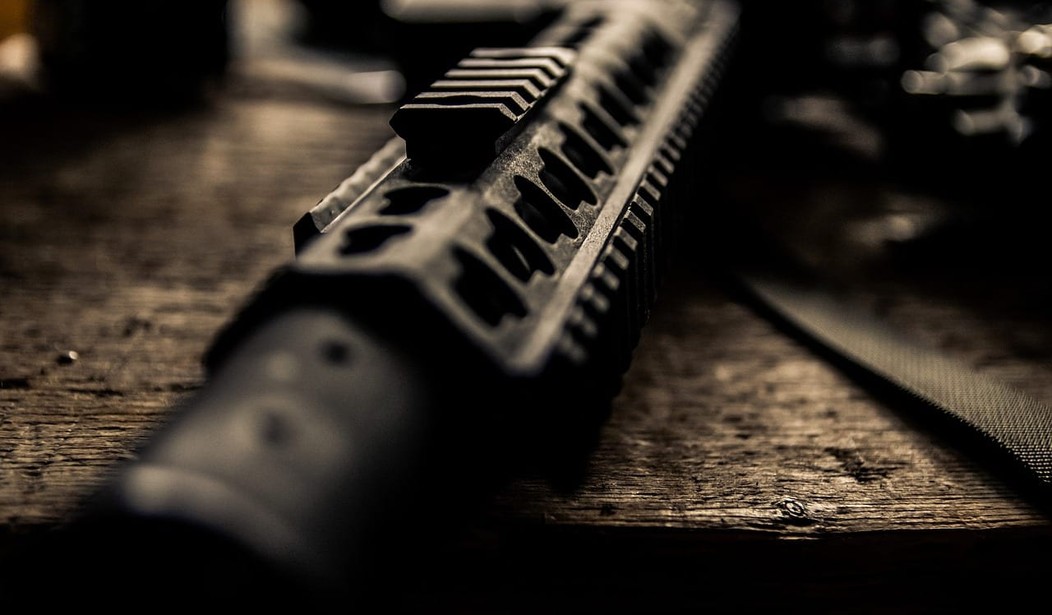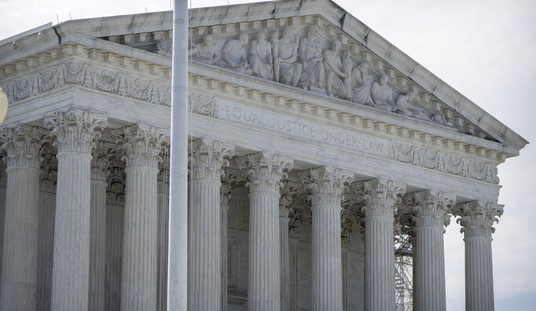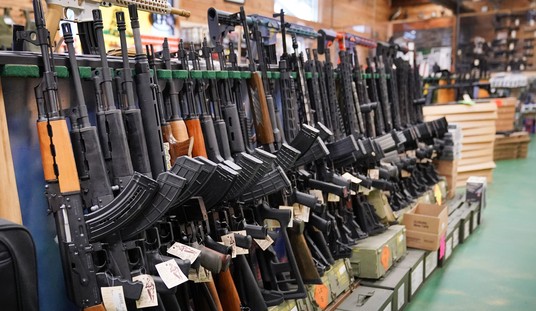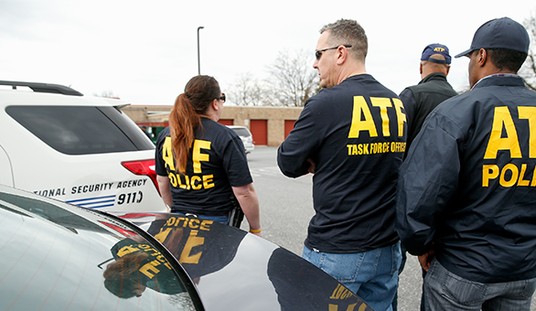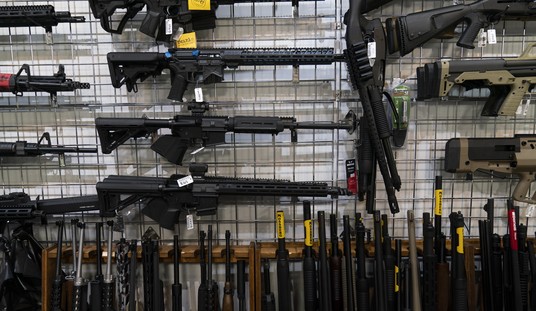David Robinson Jr. was convicted of possession of an unregistered short-barreled rifle, and though he could have faced years behind bars, a U.S. District Court judge instead gave him 18 months probation, including 6 months on home detention after concluding they were “not sure society would benefit from putting this young man in jail for any period of time” and they didn't "think a prison term would satisfy any legitimate societal goal."
Robinson, though, doesn't believe what he did constitutes a crime at all, and appealed his conviction to the Eleventh Circuit. The appellate court upheld the conviction, opining that the Supreme Court's decision in Miller back in the 1930s remains binding law. The panel further declared that not only are the NFA's registration requirements for short-barreled shotguns constitutionally kosher, but that the same registration requirements for short-barreled rifles also pass muster under the Second Amendment.
Robinson and his public defender have appealed that decision to the U.S. Supreme Court, and now they're getting a helping hand from the Second Amendment Foundation, Second Amendment Law Center, California Rifle & Pistol Association, and the Minnesota Gun Owners Caucus. The coalition has filed an amicus brief with the Supreme Court urging them to take up Robinson's appeal and pointing out several fundamental errors in the Eleventh Circuit's decision.
The most egregious flaw, according to the brief, is that the appellate court didn't conduct the historical analysis required to determine if gun control laws fit within the text of the Second Amendment and the national tradition of gun ownership. Instead, it simply relied on Miller, but as the coalition notes, the panel ignored the inherent conflict between holding that Miller is the standard, while also claiming that "weapons of war" are unprotected, given that in Miller, SCOTUS concluded that only those weapons useful to a militia are protected by the text of the Second Amendment.
That echoes the argument raised by Robinson's attorney, federal public defender A. Fitzgerald Hall, who says that the appellate court's reliance on Miller was "misplaced".
First, Miller did not hold that short-barreled shotguns were not protected arms. Rather, because the defendants “made no appearance in the case, neither filing a brief nor appearing at oral argument,” the Miller Court was not presented “any evidence tending to show” that short-barreled shotguns were protected and declined to take judicial notice that they were. Consequently, the Miller Court explained, “we cannot say that the Second Amendment guarantees the right to keep and bear such an instrument.” Declining to hold, “[i]n the absence of any evidence,” that short-barreled shotguns were protected differs from determining that the Second Amendment does not guarantee a right to possess them.
Second, because the Miller Court declined to conclude that short-barreled shotguns were protected arms, Miller stands only for the proposition that the NFA’s restrictions are valid as applied to arms that are unprotected by the Second Amendment. But this says nothing about arms that are protected—such as SBRs today. Moreover, Miller’s holding and focus on whether short-barreled shotguns were protected suggests that the NFA’s restrictions would be unconstitutional as applied to protected arms. If the NFA’s restrictions were constitutional whether or not short barreled shotguns were protected, it would have been senseless for the Court to spend so much of its opinion determining whether they were.
Third, even if Miller is read as holding that short barreled shotguns were unprotected arms in 1939, it cannot foreclose a challenge to restrictions on such arms nearly 90 years later because, as Heller explained, “Miller said . . . that the sorts of weapons protected were those ‘in common use at the time.’” And Bruen clarifies that over time, unprotected arms can become common—and thus protected—arms: Whatever the likelihood that handguns were considered “dangerous and unusual” during the colonial period, they are indisputably in “common use” for self-defense today. . . . Thus, even if these colonial laws prohibited the carrying of handguns because they were considered “dangerous and unusual weapons” in the1690s, they provide no justification for laws restricting the public carry of weapons that are unquestionably in common use today. The 1939 Miller case says nothing about whether SBRs are in common use today.
Fourth, even though Miller did not involve SBRs,the court below determined that Miller precludes Robinson’s challenge because he did “not establish[ ] how the distinctions between [SBRs] and short-barreled shotguns present a relevant and material difference that would make one regulation constitutional and the other not.” But that does not justify holding that Miller precludes a challenge to the NFA’s restrictions on SBRs. Dangerousness alone does not remove an arm from Second Amendment protection. “If Heller tells us anything, it is that firearms cannot be categorically prohibited just because they are dangerous.” Rather, this Court has clarified that a weapon loses SecondAmendment protection only if it is both dangerous and unusual, and SBRs are not “unusual.” In any event,SBRs are not “dangerous,” either, because they do not differ in function or lethality from other common rifles or handguns. SBRs offer greater stability and accuracy than handguns, making them safer to operate. And they offer greater maneuverability and portability than standard rifles, which are desirable traits for lawful defense.
In their amicus brief, the coalition of 2A groups makes the point that, even if Miller is still considered the standard in determining what arms are protected by the Second Amendent, short-barreled rifles would fit the bill. The M4 carbine is the most common service rifle used by the U.S. military, and it has a barrel length of 14 inches.
In the civilian context, where it would be sold in a semi-automatic form, that would make the most common military rifle an SBR subject to the NFA's tax, which applies to rifles that have barrels under 16 inches in length. To the extent then that Miller still tells us anything at all about which "arms" are protected, amici believe (and Heller confirmed) that its limitation of the Second Amendment to cover only arms useful to a militia is far too constrictive of the individual self-defense side of the Second Amendment - it stands for the proposition that SBRs cannot be unilaterally excluded from the scope of the right to keep and bear arms, given their prevailing use today for the very sort of combat rule Miller was looking for.
It's worth noting that the DOJ waived its right to file a response to Robinson's petition, and so far no justice has requested to hear from the Solicitor General. That's not a great sign, but there's still plenty of time for one more justice to make that request before the Court considers granting cert at its September 29 conference.
As the coalition argues in its amicus brief, SCOTUS desperately needs to take a hardware case to flesh out what arms are protected by the Second Amendment, and Robinson would, at a minimum, allow the Court to "confirm that when a ban of a firearm is at issue, the historical analysis must proceed because all firearms are at least 'arms" under the plain text of the Second Amendment." We'll see how persuasive that argument, but SAF and the other 2A groups are absolutely correct that so long as SCOTUS ducks the issue, lower courts will continue to disregard the "text, history and tradition" test in order to uphold bans on commonly-owned arms.

